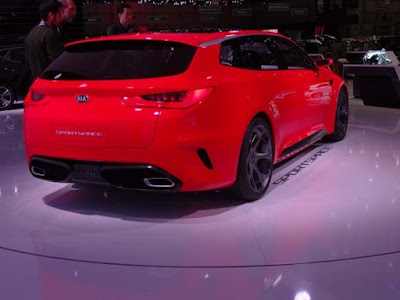British sports car maker Lotus has taken the wraps off the next generation mid-engine Evora 2+2 and announced that following the European launch this summer, will hit the North American market in the fall as a 2016 model. Called the Lotus Evora 400, it is the fastest production Lotus ever, according to the company. The 400 refers to the engine output, which sees the previous Evora S 3.5-liter V-6 fitted with a new supercharger that boosts it from 345 to 400 horsepower. Torque has been increased from 295 to 302 lb-ft with maximum torque available from 3,500 to 6,500 rpm
With a top speed of 186 mph, the Evora 400 takes just 4.1 seconds to accelerate from 0-60 mph and has beat the previous production car lap time set by the Evora S on the company's test track at Hethel, England, by 6 seconds. In addition to the engine upgrades, the 2016 Lotus Evora 400 features a new aluminum chassis, updated interior and lightweight composite body panels that give the car a new look
Faster and lighter
In addition to being faster than the model it replaces, it's lighter with the new design shaving 45 pounds from the previous model even though content has been increased. "We have always said that to make a car better, you must make it faster and lighter," said Jean-Marc Gales, CEO for Group Lotus. We have achieved this, of course, but we didn't stop there, as considerable number of changes in the interior, chassis, engine and body design have warranted emphatically the title of a new Lotus Evora
The new Evora 400 features new styling that includes a bolder face with larger cooling inlets and LED daytime running lights. At the rear, the Evora benefits from a new bumper, lightweight composite rear diffuser and a three-element wing. The car has a more aggressive stance and appears lower, wider and more planted on the road. Overall length has increased 1.4 inches and yet a shorter front overhang reduces the approach angle from 11.5 to 10 degrees
Cabin improvements
Among the upgrades to the interior, first and foremost, Lotus had made the Evora easier to get in and out of, thanks to narrower and lower sills as well as thinner inside door panels. All new sport seats are lighter, more aggressively bolstered and supportive. The new bonded aluminum chassis not only has thinner sills without sacrificing stiffness, but also allows for a slightly larger rear seating area that's 11 inches wider. The Evora 400 has three new trim levels including upgrades to full Alcantara or Scottish leather, each package featuring specific detailing
In addition to an all-new dash layout, revised instrument cluster and a lightweight forged aluminum sport steering wheel, the Evora 400 benefits from an all-new climate control system that provides greater airflow and more operator control. Other changes include the incorporation of a stop/start button and the introduction of a new high-end sound system. Lotus, which produces about 45 cars per week, will ramp production up to 70 per week to accommodate the demand for the Evora 400. Pricing will be announced closer to its launch date





















































